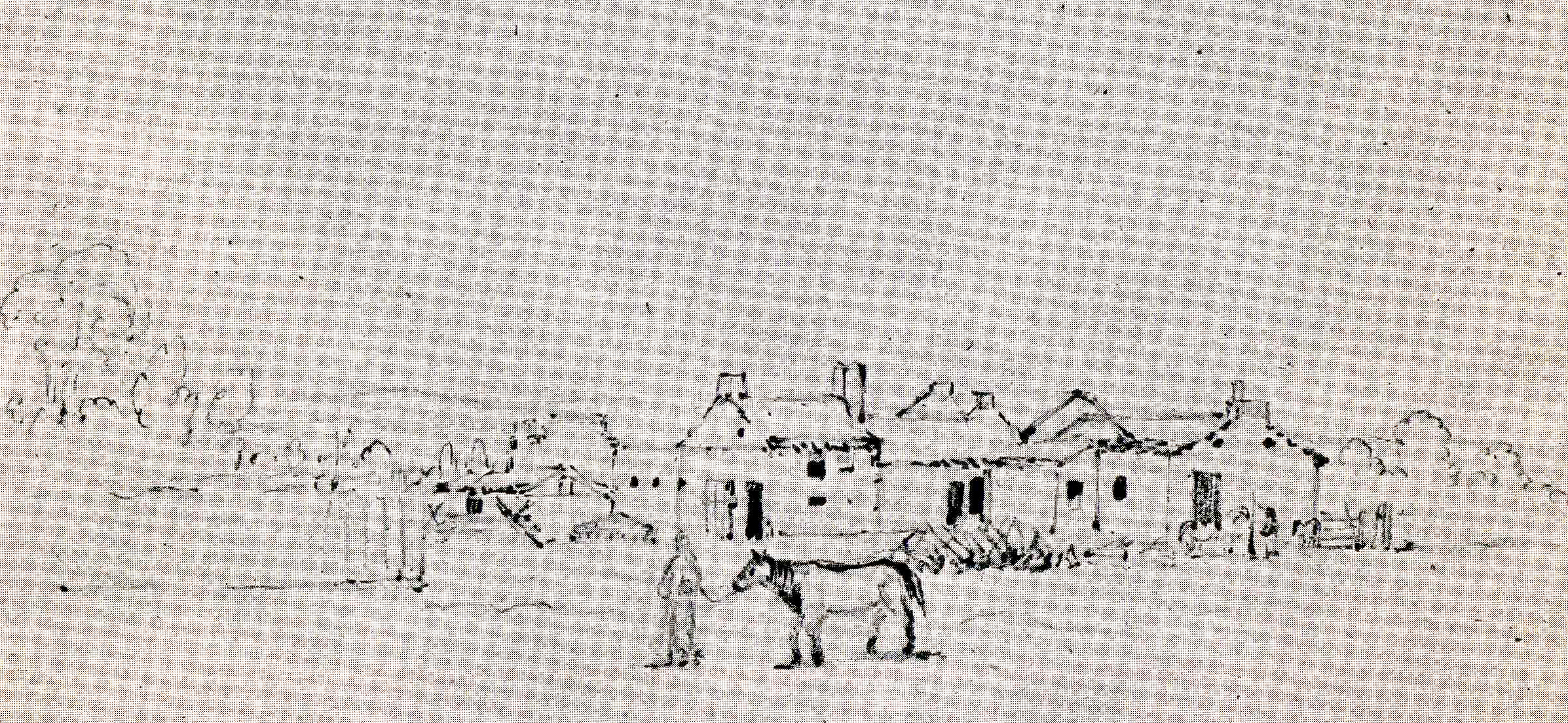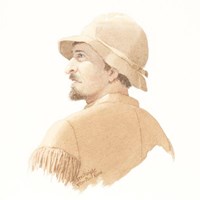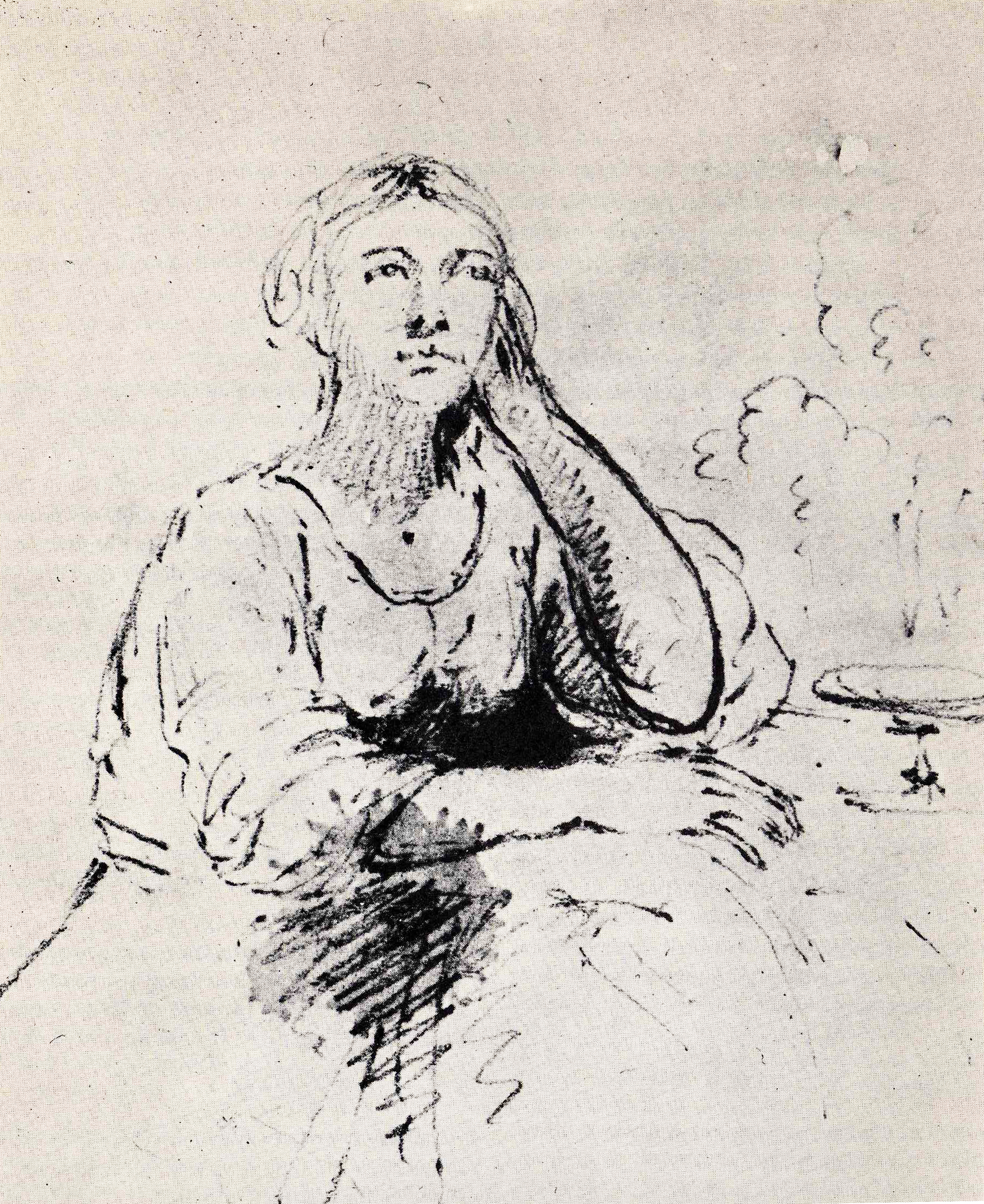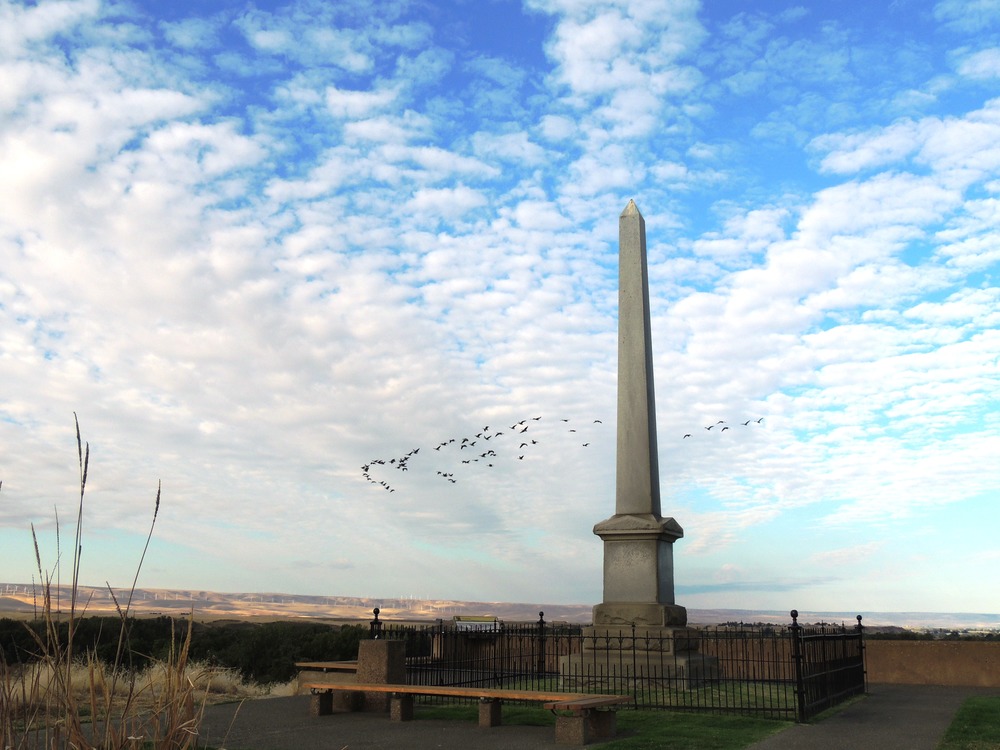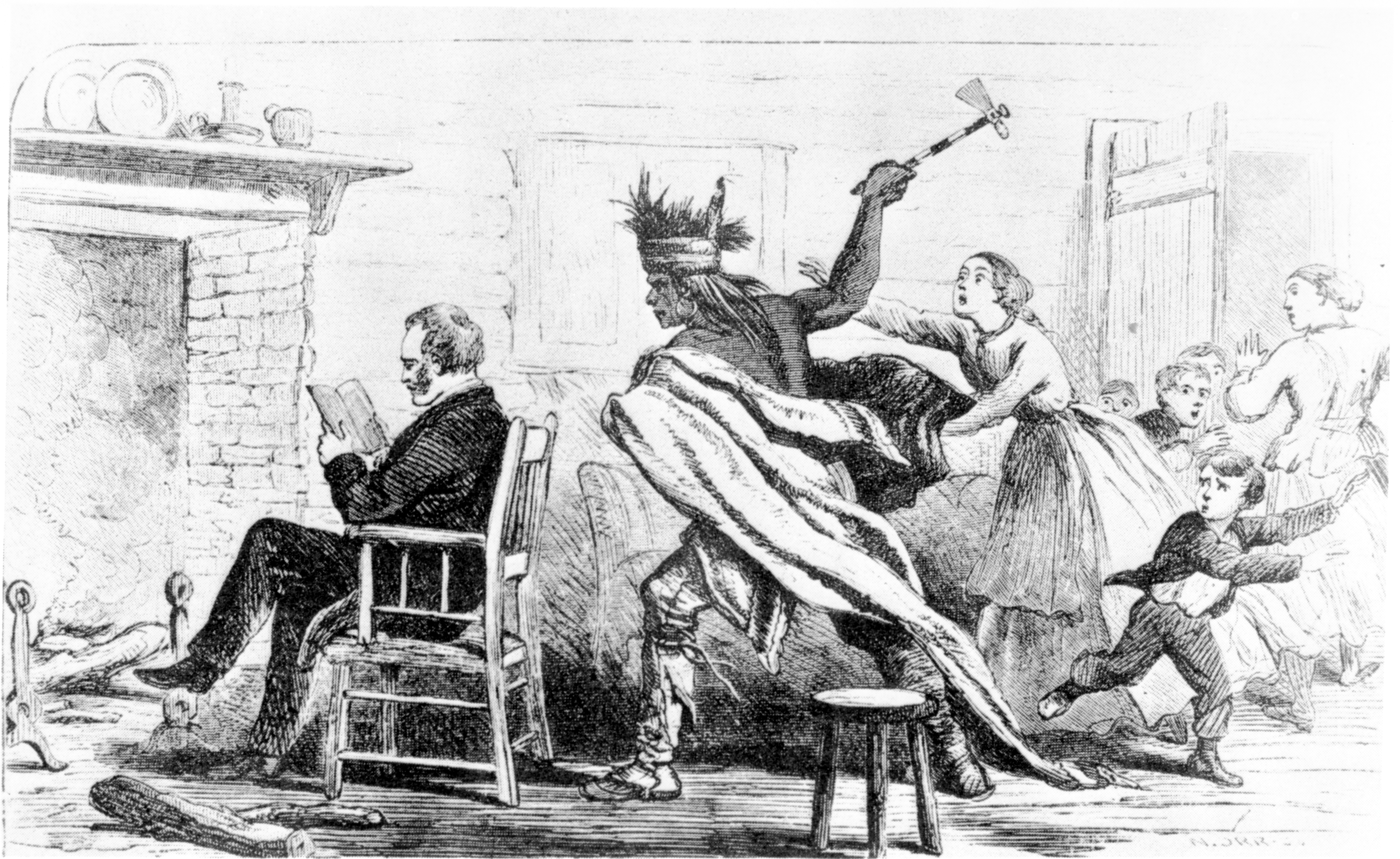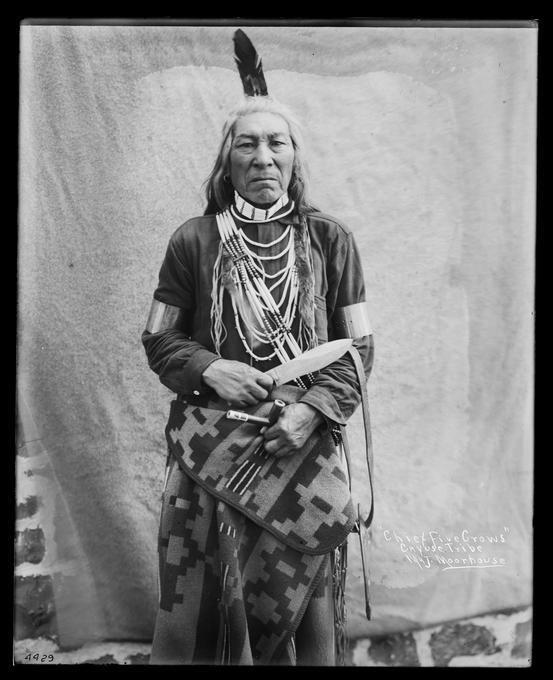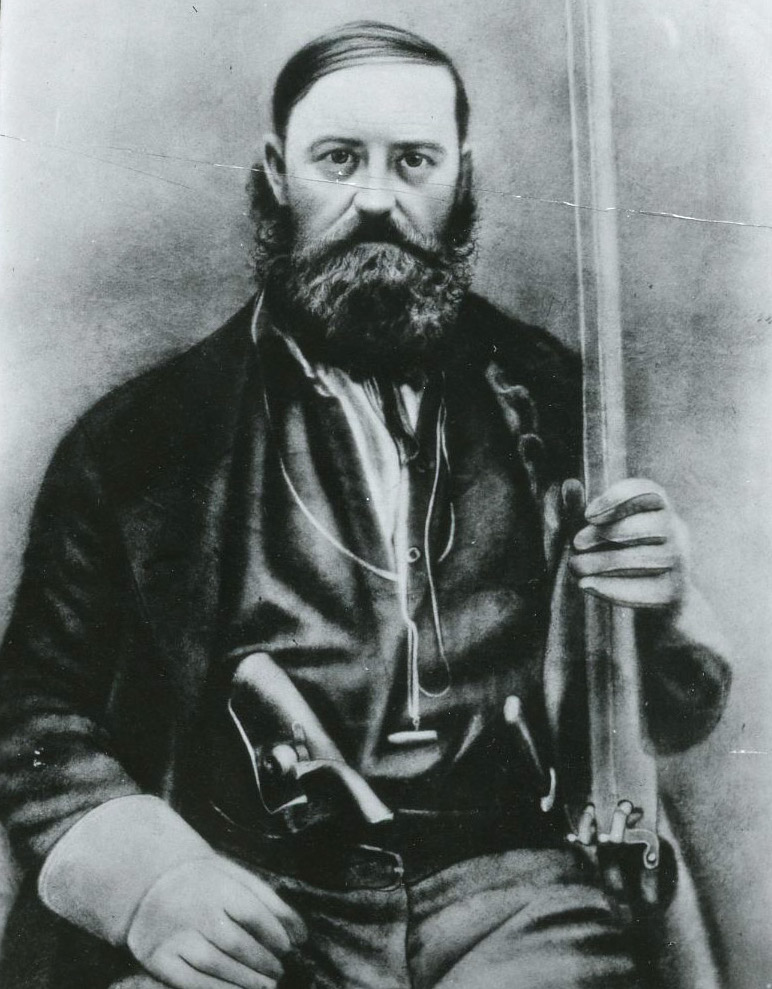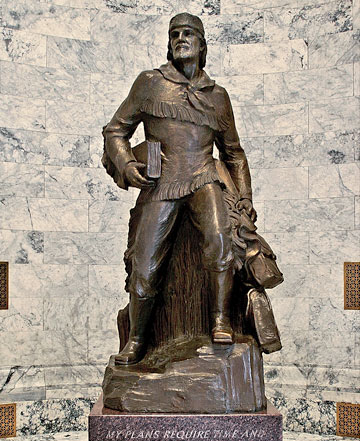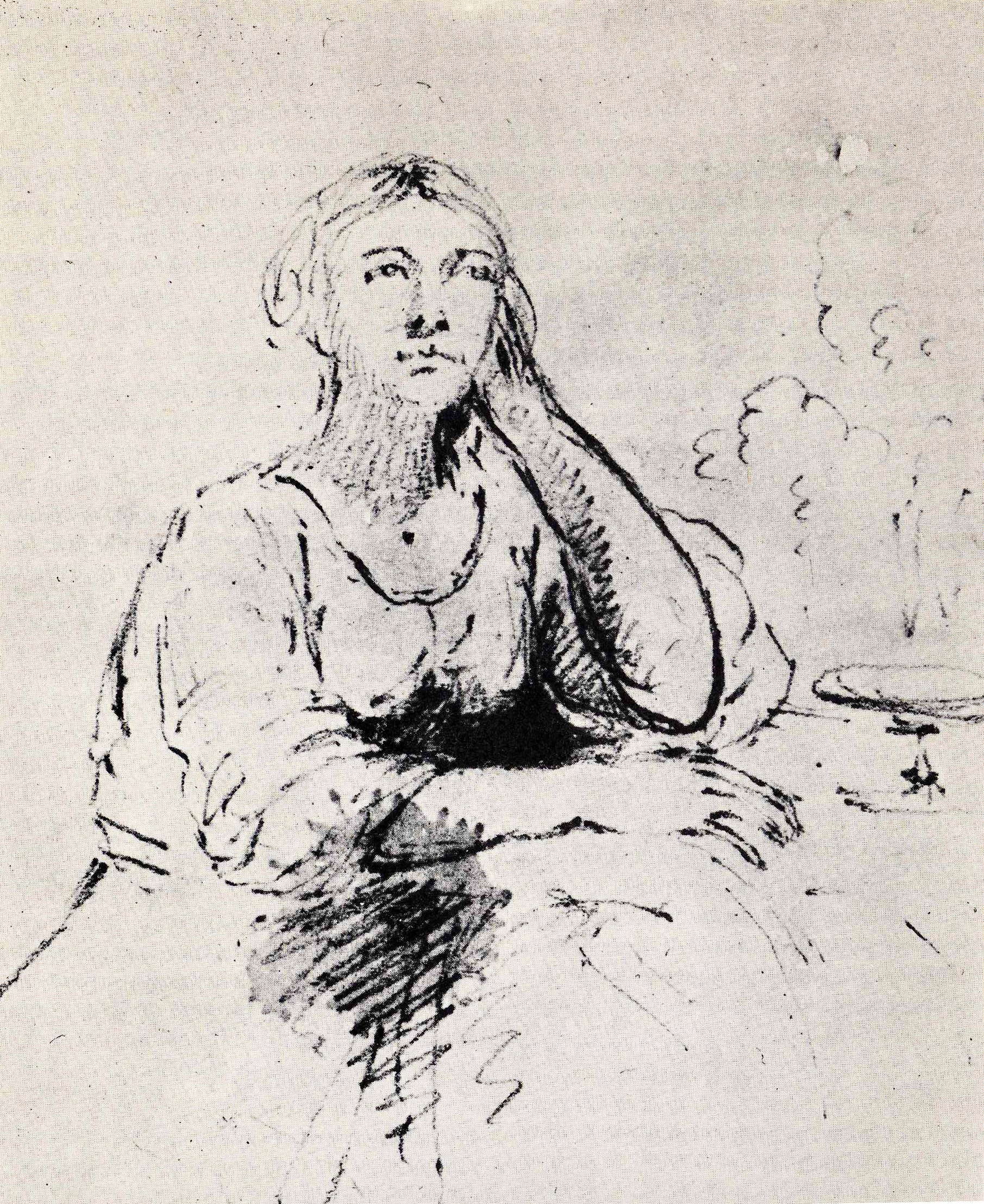On November 29, 1847, Protestant missionaries Marcus and Narcissa Whitman and twelve others were killed by members of the Waiilatpu band of the Cayuse Indian Nation. Scores of other pioneers were held captive.
The killings, which came to be called the Whitman Massacre, happened at a Protestant mission in a remote part of the Oregon frontier, near what is now Walla Walla, Washington. For years, politicians in Washington, D.C., had debated whether or not to proclaim the Oregon frontier as a U.S. territory. The tragedy and the need to protect U.S. citizens from Native uprising was the catalyst that prompted Congress to cease debate and take action. In order to dispense justice to the new U.S. possession, President James K. Polk dispatched a governor, judge, prosecutor, marshal, and militia, who were instructed to bring the Whitman murderers to justice.
After almost two years of pursuit, the Waiilatpu Cayuse surrendered five volunteers from their band. The U.S. Cavalry took the five accused murderers 250 miles from their homelands to Oregon City, the capital seat of Oregon Territory. It was there that Chief Telokite, Tomahas, Isiaasheluckas, Clokomas, and Kiamasumkin were placed on trial for the murder of Marcus Whitman.
The trial was one of Oregon's earliest attempts at formal and proper judicial procedure. The trial participants included pioneers famous in Oregon frontier history, including Judge Orville C. Pratt, Prosecutor Amory Holbrook, U.S. Marshal Joe Meek as bailiff, Frank Holland and George Law Curry as court clerks, and Francis Pettygrove as foreman of the grand jury.
The five Cayuse men were kept in chains during the trial. They were provided two interpreters, presumably one to translate from English to Chinook Jargon (Chinuk Wawa), the other to relay the Chinook Jargon in Cayuse.
Court proceedings began on May 21, 1850. Judge Pratt's first order of business was to appoint three lawyers for the defendants. Lead defense counsel was Kintzing Pritchette, the newly appointed secretary of the territory, the second officer in command behind Governor Joe Lane. The defendants and their lawyers were read the indictment, and the men pled not guilty.
The following morning, defense motions were heard, one of which asked for a dismissal of the indictment because it was based on ex post facto law. The motion charged a crime before there was any formalized law criminalizing the incident; that is, U.S. courts had no jurisdiction over a killing not yet governed by U.S. law. The defenders also pled for a different time and place for trial, because Oregon City citizens were hostile and Pritchette needed more time for preparation. Judge Pratt denied all of the defense motions.
Trial began on May 23. Twelve jurors—all white men—were selected after the defense lawyers challenged and eliminated twenty-four prospects. Testimony was taken from four prosecution witnesses, all survivors of the attack. The defense called three witnesses, including John McLoughlin and Cayuse Chief Stickus, whom Pratt did not allow to testify about Cayuse law and custom.
The next day, closing arguments from prosecutor Holbrook and the three defense lawyers lasted three hours. Judge Pratt then took seventy minutes to instruct the jury on pertinent law. Part of the instructions included improper hearsay. The judge allowed the jury to conclude that the surrender of the five volunteers was an admission of guilt.
The jury deliberated seventy-five minutes and reached a guilty verdict. Defense counsel then asked for a new trial and for the right to appeal. The judge denied those motions. On May 24, Judge Pratt sentenced all five Cayuse to be taken to the gallows and hanged until dead.
Soon after trial, Governor Lane declared his resignation as governor, effective on June 18, 1850. As Lane's replacement, Secretary Pritchette vowed to pardon the five Cayuse, but pardoning power would not pass to Pritchette until twenty-five days after trial. Accordingly, Marshal Meek wondered if it was proper to delay the hangings for two more weeks. Judge Pratt stood firm and told Meek to proceed as ordered in the court's judgment ruling.
On June 3, 1850, U.S. Marshal Meek hanged the prisoners before a large crowd of Oregon City spectators. They were buried at the outskirts of Oregon City in unmarked graves.
-
![Whitman Mission buildings at Waiilatpu, about 1846.]()
Whitman Mission, Paul Kane sketch of, ca. 1846.
Whitman Mission buildings at Waiilatpu, about 1846. Sketch by Paul Kane, from Thomas Vaugan, ed., Paul Kane, The Columbia Wanderer: Sketches, Paintings, and Comment, 1846-1847, Oreg. Hist. Soc. Press, 1971, p. 16.
-
![General Joseph Lane, ba018668 OrHi 1703]()
General Joseph Lane.
General Joseph Lane, ba018668 OrHi 1703 Credit Oregon Historical Society Research Library
-
![]()
Possible sketch of Marcus Whitman, based on a sketch by Paul Kane.
Courtesy National Park Service -
![Narcissa Whitman, about 1846.]()
Whitman, Narcissa, Paul Kane sketch of, ca. 1846.
Narcissa Whitman, about 1846. Sketch by Paul Kane, from Thomas Vaugan, ed., Paul Kane, The Columbia Wanderer: Sketches, Paintings, and Comment, 1846-1847, Oreg. Hist. Soc. Press, 1971, p. 52.
-
![]()
Whitman monument.
Courtesy National Park Service -
![Historically inaccurate illustrations, such as this one, emphasized racist stereotypes and incited violence against Native peoples.]()
Lithograph depicting the Whitman murders.
Historically inaccurate illustrations, such as this one, emphasized racist stereotypes and incited violence against Native peoples. Oreg. Hist. Soc. Research Lib., bb000025
Related Entries
-
![Cayuse Indian War (1847–1850)]()
Cayuse Indian War (1847–1850)
The first major and ongoing conflict between Native groups and white re…
-
![Joseph Lane (1801-1881)]()
Joseph Lane (1801-1881)
Joseph Lane was the first governor of Oregon Territory. A leading Democ…
-
![Joseph L. Meek (1810–1875)]()
Joseph L. Meek (1810–1875)
Joseph L. Meek, a mountain man, storyteller, and public personality, pl…
-
![Marcus Whitman (1802–1847)]()
Marcus Whitman (1802–1847)
Marcus Whitman left his mark on Oregon Country as an early missionary t…
-
![Narcissa Whitman (1808-1847)]()
Narcissa Whitman (1808-1847)
Missionary Narcissa Prentiss Whitman is probably Old Oregon’s most famo…
-
![Whitman Murders]()
Whitman Murders
The 1847 murders of frontier missionaries Marcus and Narcissa Whitman n…
Related Historical Records
Map This on the Oregon History WayFinder
The Oregon History Wayfinder is an interactive map that identifies significant places, people, and events in Oregon history.
Further Reading
Lansing, Ronald B. Juggernaut: The Whitman Massacre Trial, 1850. San Francisco: Ninth Judicial Circuit Historical Society, 1993.
Phinney, Wil. "Search underway for burial sites of Cayuse Five." Confederated Umatilla Journal. July 13, 2022.
Ruby, Robert H. and John Arthur Brown. The Cayuse Indians. Norman: University of Oklahoma Press, 2005.

